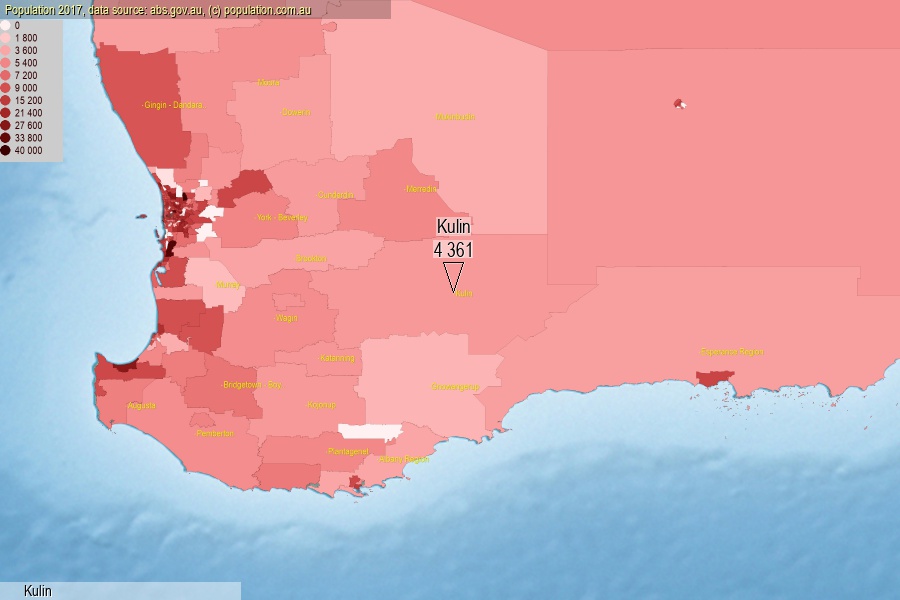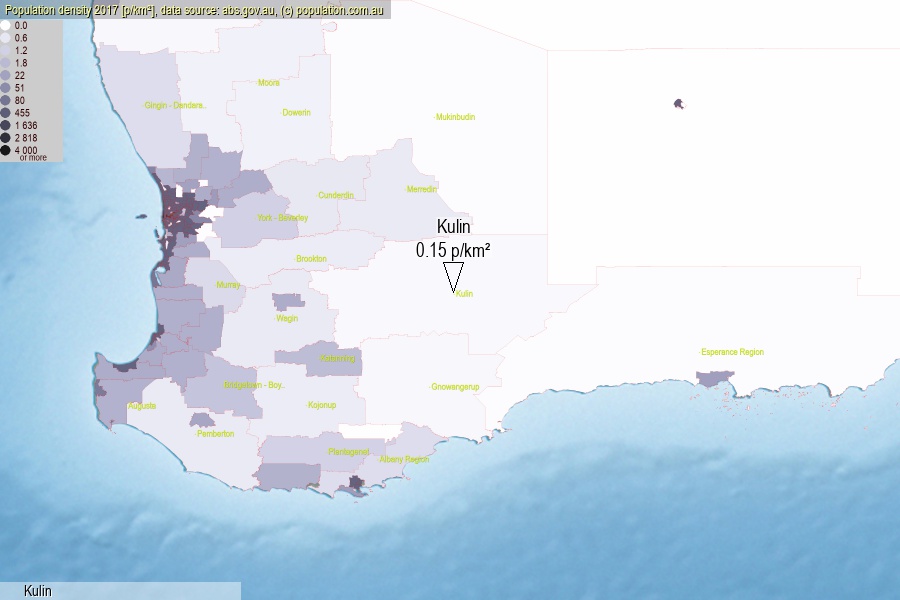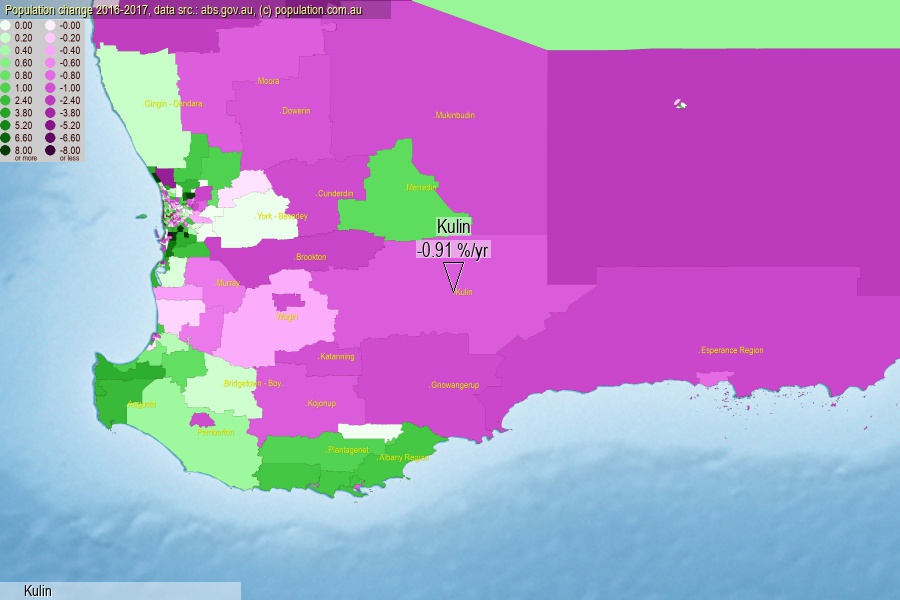 population.com.au
population.com.auLast official estimated population of Kulin (as Statistical Area Level 2) was 4 361 people (on 2017-06-30)[2]. This was 0.02% of total Australian population and 0.168% of WA population. Area of Kulin is 28 626.20 km², in this year population density was 0.15 p/km² . If population growth rate would be same as in period 2016-2017 (-0.91%/yr), Kulin population in 2025 would be 4 054. [0]



Click to enlarge. Kulin is located in the center of the images.
Population [people], population density [p./km²] and population change [%/year] [2]
View borders » (new window) [4]
[1991-1992] -0.25 %/Yr.
[1992-1993] +0.73 %/Yr.
[1993-1994] -0.53 %/Yr.
[1994-1995] -2.29 %/Yr.
[1995-1996] -1.82 %/Yr.
[1996-1997] -1.92 %/Yr.
[1997-1998] -2.35 %/Yr.
[1998-1999] -2.51 %/Yr.
[1999-2000] -3.19 %/Yr.
[2000-2001] -3.20 %/Yr.
[2001-2002] -0.75 %/Yr.
[2002-2003] -0.72 %/Yr.
[2003-2004] -0.96 %/Yr.
[2004-2005] -0.36 %/Yr.
[2005-2006] -0.16 %/Yr.
[2006-2007] -2.93 %/Yr.
[2007-2008] -0.94 %/Yr.
[2008-2009] -0.25 %/Yr.
[2009-2010] -0.02 %/Yr.
[2010-2011] +0.28 %/Yr.
[2011-2012] -0.59 %/Yr.
[2012-2013] -1.83 %/Yr.
[2013-2014] -3.45 %/Yr.
[2014-2015] -0.58 %/Yr.
[2015-2016] -0.47 %/Yr.
[2016-2017] -0.91 %/Yr.
[0] Calculated with linear interpolation from officially estimated population
[1] Read more about SA2 and Australian Statistical Geography Standard (ASGS) on abs.gov.au
[2] Population data from Australian Bureau of Statistics (Population and density: 2017; change: 2016-2017)
[3] Digital Boundaries: Australian Statistical Geography Standard (ASGS) 2016.
[4] Border coordinates are simplifyed using Ramer-Douglas-Peucker algorithm.